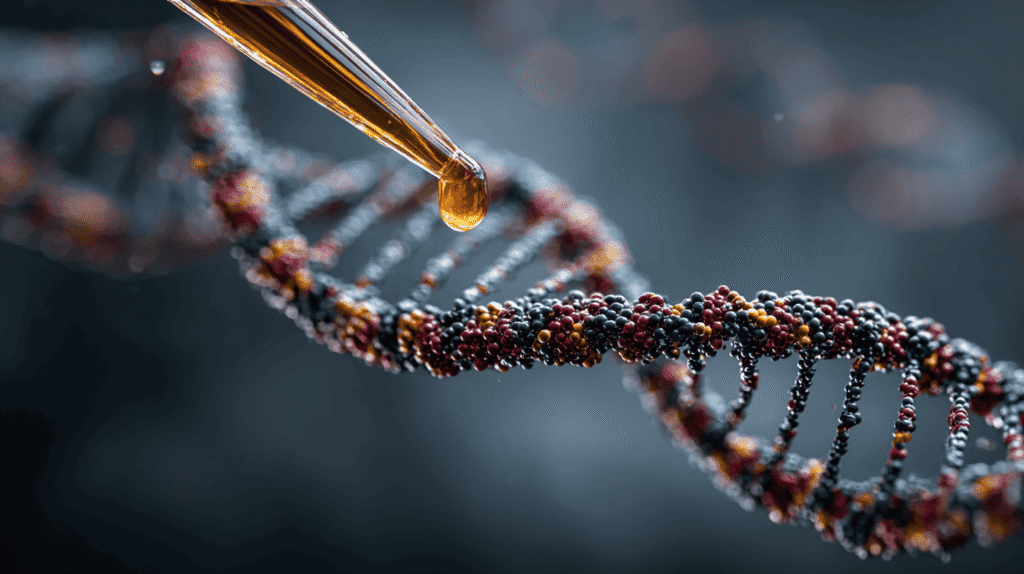PDI: The Surprising Enzyme Offering Hope in DNA Repair and Aging
The Role of DNA Damage in Aging
Recent studies have underscored the critical importance of DNA integrity in cellular function and aging. Since the discovery of DNA, it has been evident that damage to this essential molecule can significantly disrupt cellular processes. This is particularly true for neurons, which face unique challenges in repairing DNA due to their non-dividing nature.
Dr. Shadfar highlights the constant barrage of damage our DNA faces:
“Every day, individual cells suffer thousands of tiny hits to their DNA—from both internal processes and environmental stressors like pollution or UV light.”
As aging advances, the body’s DNA repair mechanisms weaken, allowing damage to accumulate. This buildup of DNA damage is increasingly recognized as a core contributor to aging and the emergence of age-related diseases. Particularly in the brain, the accumulation of such damage can prove lethal to vital cells.
Protein Disulphide Isomerase: A Revolutionary Discovery
A recent study published in Aging Cell has shed light on an unexpected role of Protein Disulphide Isomerase (PDI). Although traditionally known for its role in protein folding within the cytoplasm, researchers from Macquarie University and La Trobe University have unveiled PDI’s significant role in DNA repair.
PDI: From Protein Folding to DNA Repair
- Location: Typically resides in the cytoplasm, ensuring proteins fold correctly.
- New Role: Moves into the cell nucleus to assist in repairing double-strand DNA breaks, functioning like a "glue" that holds DNA fragments together.
Dr. Shadfar elaborates:
“For the first time, we’ve shown it acts like a glue or catalyst, helping to repair broken DNA in both dividing and non-dividing cells.”
Experimental Insights
The team conducted tests on mouse and human cancer cells, finding that:
- Without PDI: Cells struggled to repair DNA breaks.
- With PDI: DNA repair processes swiftly resumed.
- Zebrafish Model: Experiments demonstrated PDI’s protective effects against age-related DNA damage.
The Dual Nature of PDI in Health and Disease
Interestingly, PDI functions as a "double agent."
- In Healthy Cells: It promotes DNA repair, ultimately preventing diseases.
- In Cancer Cells: PDI is often hijacked, protecting tumors rather than aiding healthy cellular function.
Understanding PDI’s complex role is vital for both aging research and cancer therapy.
Implications for Age-Related Research
This groundbreaking discovery opens new avenues in age-related research, particularly concerning DNA repair in neurons:
- Aging Connection: Accumulated DNA damage is considered a primary cause of aging, especially in neurons with limited DNA repair options.
- Neurodegenerative Diseases: Disorders like ALS and Alzheimer’s may be linked to PDI’s dysfunction, highlighting the potential for PDI as a therapeutic target.
Potential Therapeutic Applications
The research suggests that:
- Enhancing PDI: Could potentially boost DNA repair in vulnerable neuronal cells.
- Targeting PDI: Suppressing PDI function may be beneficial in cancer treatment.
Future studies need to explore PDI’s interactions with other repair proteins and determine its operational mechanisms within the cellular environment.
Conclusion: A Glimmer of Hope Against Aging
As we deepen our understanding of cellular maintenance, PDI is revealing its dual capabilities—an enzyme that can either defend our cells against aging or exacerbate cancer. The potential for developing drugs that modulate PDI’s functions holds promise for addressing some of the greatest challenges in medical science today.
For more information on DNA repair mechanisms and their importance in aging, visit Aging Cell.
This research indeed paves the way for innovative strategies to maintain cellular health and longevity, fostering a future where age-related degeneration might be mitigated.


